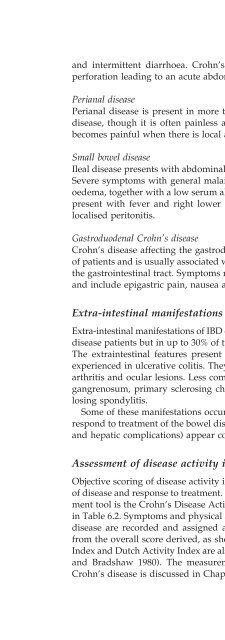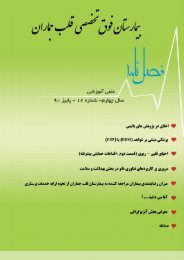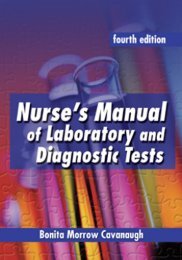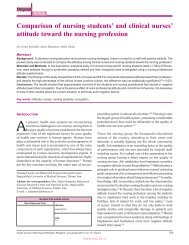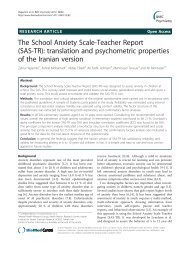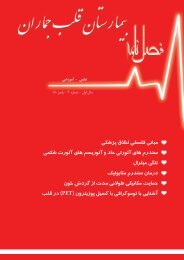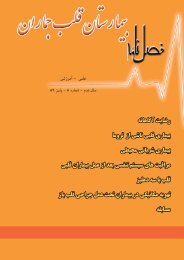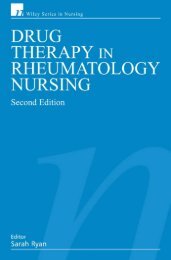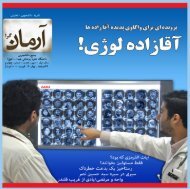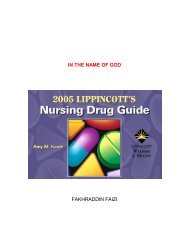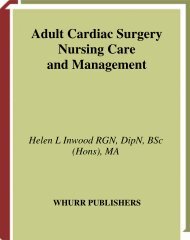Gastrointestinal Nursing.pdf
Gastrointestinal Nursing.pdf
Gastrointestinal Nursing.pdf
Create successful ePaper yourself
Turn your PDF publications into a flip-book with our unique Google optimized e-Paper software.
The Large Intestine 91and intermittent diarrhoea. Crohn’s colitis may be complicated by colonicperforation leading to an acute abdominal emergency.Perianal diseasePerianal disease is present in more than two-thirds of patients with Crohn’sdisease, though it is often painless and asymptomatic. Perianal disease onlybecomes painful when there is local abscess formation or active anal fissure.Small bowel diseaseIleal disease presents with abdominal pain, diarrhoea and an abdominal mass.Severe symptoms with general malaise, anorexia, weight loss and peripheraloedema, together with a low serum albumin, may occur. Occasionally patientspresent with fever and right lower quadrant abdominal pain as a result oflocalised peritonitis.Gastroduodenal Crohn’s diseaseCrohn’s disease affecting the gastroduodenal region occurs in fewer than 5%of patients and is usually associated with macroscopic disease in other parts ofthe gastrointestinal tract. Symptoms may resemble that of peptic ulcer diseaseand include epigastric pain, nausea and postprandial vomiting.Extra-intestinal manifestations in Crohn’s diseaseExtra-intestinal manifestations of IBD occur in approximately 15% of all Crohn’sdisease patients but in up to 30% of those with colonic disease ( Jewell 2000b).The extraintestinal features present in Crohn’s disease are similar to thoseexperienced in ulcerative colitis. They include erythema nodosum, peripheralarthritis and ocular lesions. Less commonly (< 5%), patients report pyodermagangrenosum, primary sclerosing cholangitis, renal complications and ankylosingspondylitis.Some of these manifestations occur during active phases of the disease andrespond to treatment of the bowel disorder, others (e.g. ankylosing spondylitisand hepatic complications) appear completely unrelated to disease activity.Assessment of disease activity in Crohn’s diseaseObjective scoring of disease activity is important in the assessment of severityof disease and response to treatment. The most commonly used activity assessmenttool is the Crohn’s Disease Activity Index (CDAI), which is summarisedin Table 6.2. Symptoms and physical and laboratory manifestations of Crohn’sdisease are recorded and assigned a weight. Disease activity is determinedfrom the overall score derived, as shown in Table 6.3. The Harvey–BradshawIndex and Dutch Activity Index are also widely used in clinical studies (Harveyand Bradshaw 1980). The measurement of health-related quality of life inCrohn’s disease is discussed in Chapter 14.


